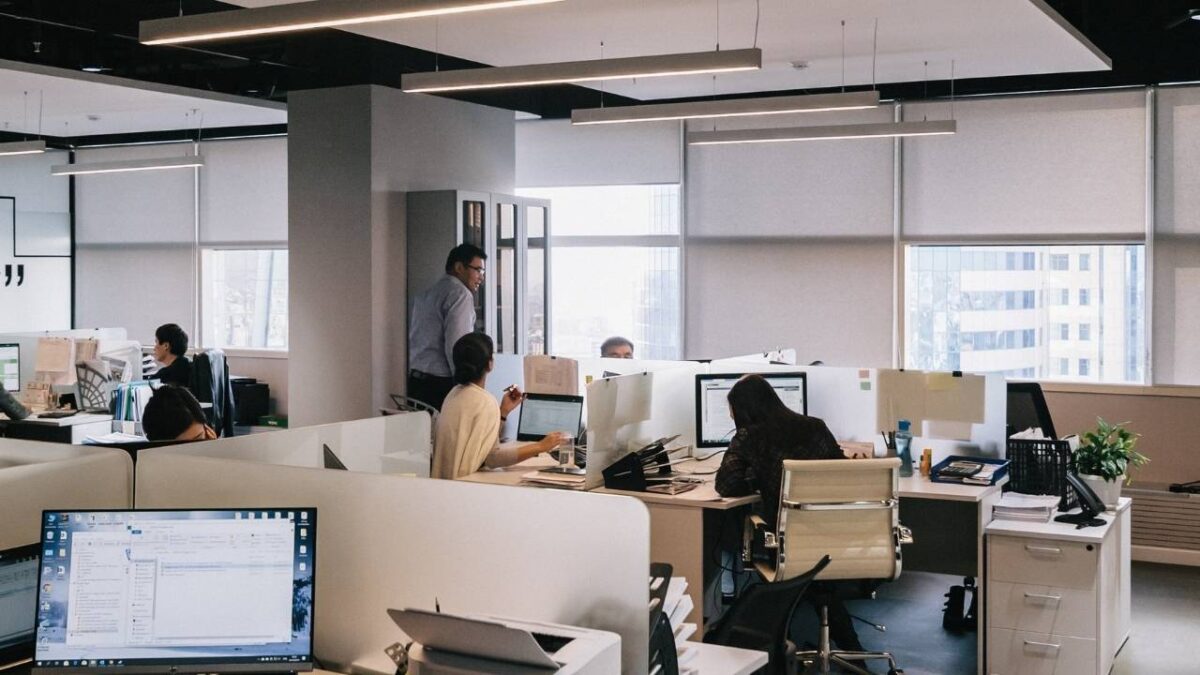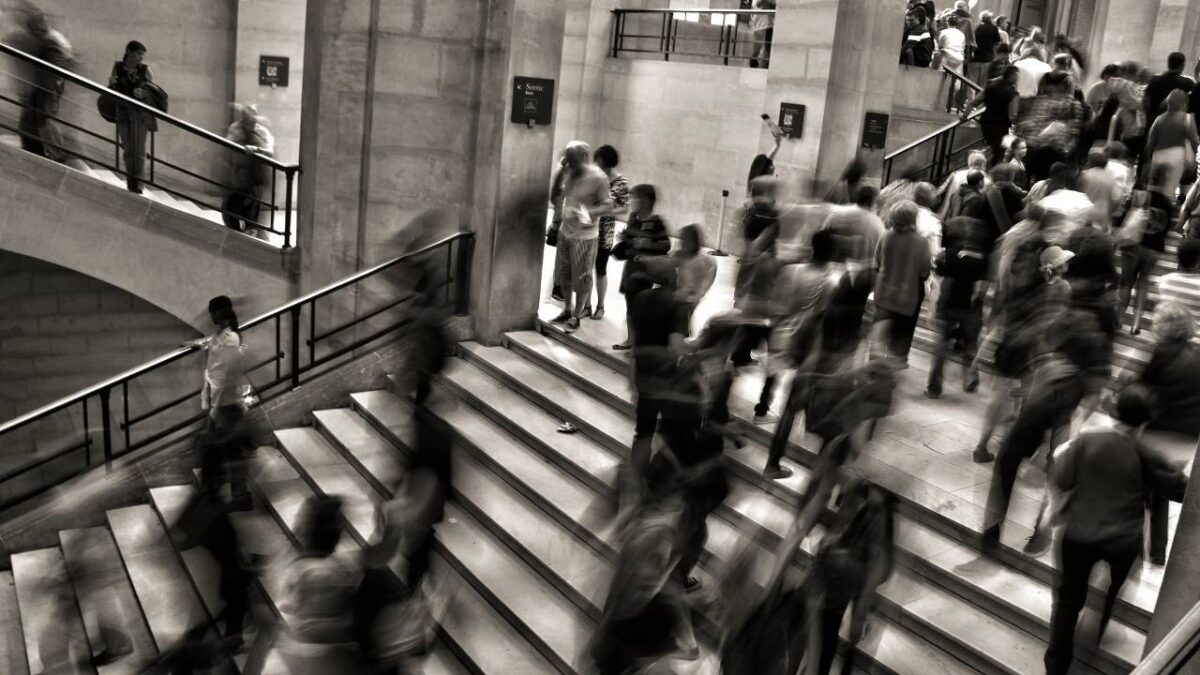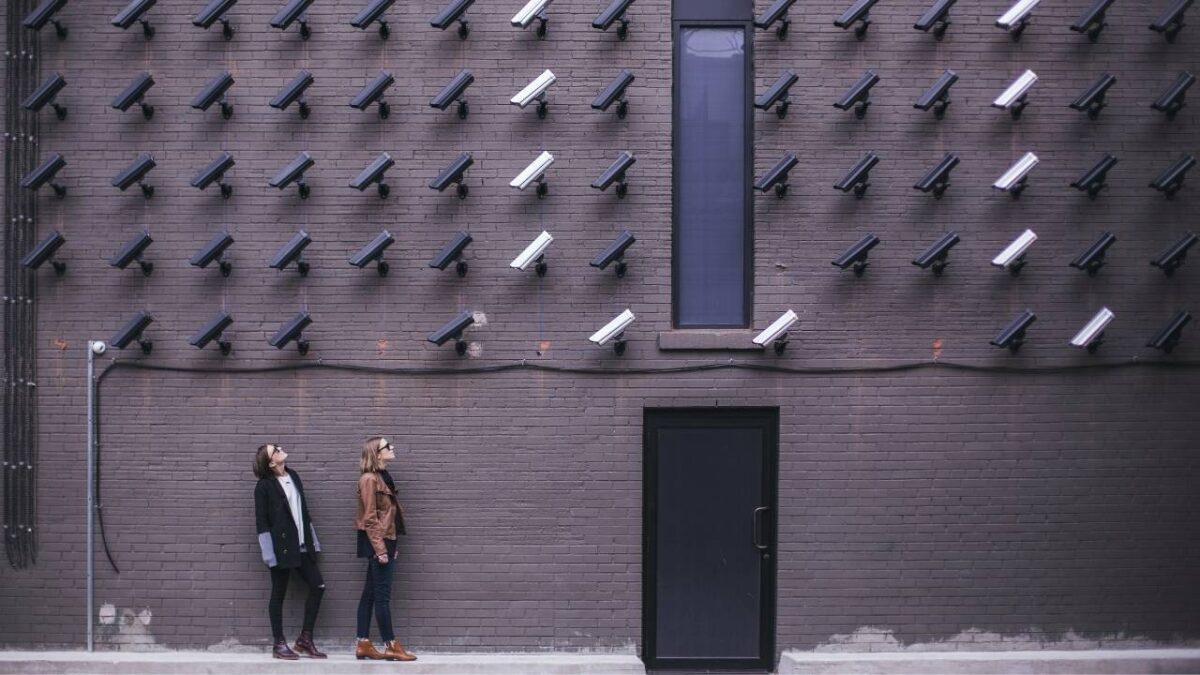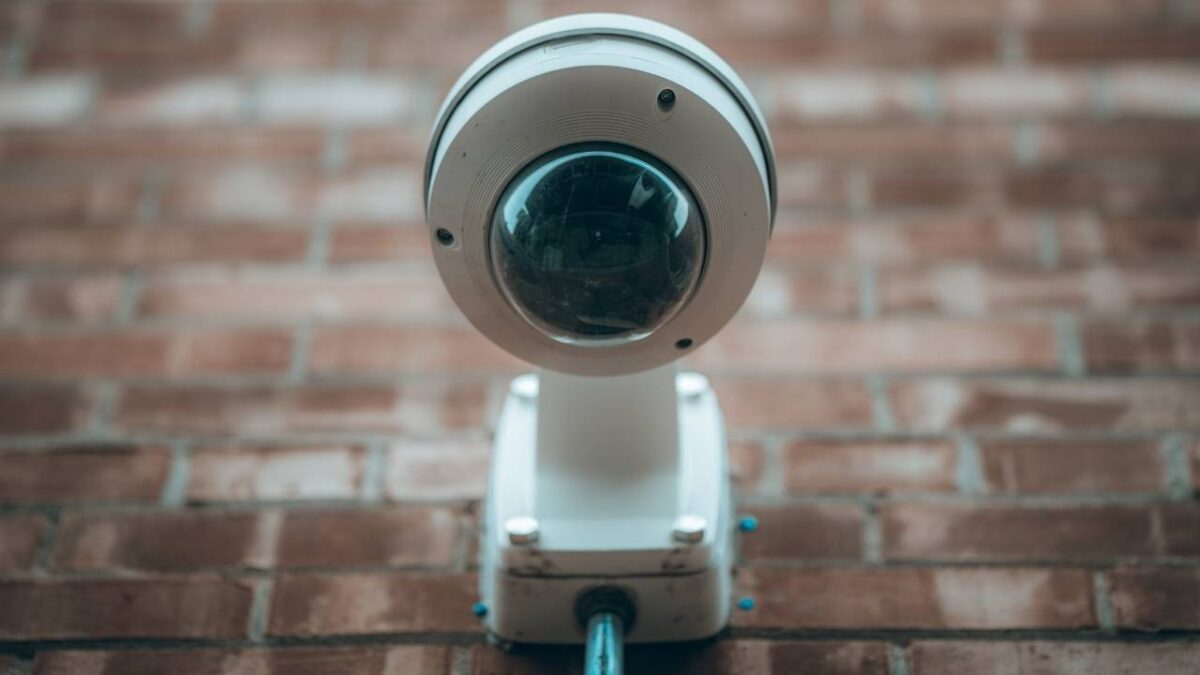To create safe business spaces, thoughtful integration of architectural, technological, and operational measures is key. As you lay out your plans, consider the accessibility of entrances and exits, the overall flow of people through your space, and the use of lighting and surveillance systems to deter criminal activity. Incorporating these aspects into your design enhances security without sacrificing aesthetic appeal.
In balancing style and protection, keep in mind that security measures should remain functional while not hindering the productivity and comfort of your staff. Seek professional consultation, if necessary, to ensure all risks are addressed, and your space is optimised for safety and security.
Principles of Secure and Safe Spaces
Access Control and Security
When designing a secure space, it is important to consider access control. This involves creating different layers of security to prevent unauthorised entry into your business. Consider implementing identification card entry systems, home alarm systems, or even biometric access controls. These measures will help ensure that only authorised individuals can enter certain areas of your facility, thus enhancing safety and security.
Lighting for Safety
Proper lighting plays a critical role in making a space secure. Well-lit areas deter intruders and reduce the likelihood of accidents. Ensure that your business premises are illuminated, particularly in areas like entryways, exits, and car parks. You can also utilise motion-sensor lights to detect movements and save energy in areas that don’t require constant lighting.
The Role of Surveillance
Surveillance is an essential component of security and crime prevention through environmental design (CPTED). Installing CCTV cameras at strategic locations around your business can help deter criminal activity and provide valuable evidence if an incident occurs. You should also consider placing signage informing visitors and potential intruders of the presence of surveillance systems. This will add an extra layer of deterrence.
Visibility in Design
Incorporating visibility into your business space design is a key principle of CPTED. Aim to create an environment where employees and visitors can effortlessly see and be seen, thus discouraging criminal behaviour. This can be achieved by using glass doors and windows, as well as ensuring that landscaping does not obstruct views. The better the visibility, the safer your space will be for everyone.
The Art of Space Management

Functional Space Planning
When designing your office space, it’s essential to consider functionality. Adjust your layout to maximise productivity by placing related departments together, creating quiet zones for focused work, and designating spaces for collaboration. Consider your employees’ comfort by providing ergonomic furniture and natural lighting. Maintaining an efficient and pleasant work environment will improve overall employee satisfaction.
Circulation and Layout Design
Proper circulation is vital for a safe and efficient workplace. Ensure staff can easily navigate between different spaces, particularly in high-traffic areas. Design your office layout to minimise congestion and create smooth, logical pathways. Keep emergency exits and evacuation routes clear and easily accessible. Proper circulation helps avoid accidents and contributes to a more comfortable working environment.
Innovative Office Spaces
Embrace innovative office space designs that cater to modern working trends. Flexible working spaces allow employees to choose where they complete tasks, promoting collaboration and cross-departmental interactions. Create zones for relaxation and focus, allowing staff to recharge and reduce stress. Sustainable design should also be considered, with energy-efficient technologies and environmentally friendly materials incorporated into the office space.
Designing for Comfort and Privacy
Furniture Selection for Safe Spaces
Selecting the right furniture plays a vital role in ensuring comfort and safety in your business space. Choose pieces that promote a sense of belonging and security while considering ergonomics and functionality. This could include comfortable seating options, adjustable desks, and ample storage that keeps clutter to a minimum. Remember, well-designed furniture can help create a harmonious environment where your employees feel at ease.
Balance of Openness and Privacy
It’s important to strike a fine balance between openness and privacy in your workplace. Encourage collaboration by providing open spaces that foster communication and teamwork. However, don’t overlook the value of quiet zones where your employees can focus on tasks that require concentration or have sensitive discussions. Introduce partitions or room dividers, such as acoustic panels or frosted glass, to create safe spaces without completely isolating individuals. This way, you can accommodate diverse work preferences and maintain a sense of community in your business space.
Designing Safe Public and Home Spaces

Risk Assessment in Public Spaces
When designing public spaces, it’s crucial to conduct a thorough risk assessment. This allows you to identify potential hazards and take appropriate measures to prevent accidents and injuries. Begin by walking around the site, noting any safety concerns such as uneven surfaces, sharp edges, or areas with poor visibility. Consider the activities that will take place in the area and how they may pose risks to users.
Next, evaluate the likelihood of incidents occurring and gauge the severity of their potential consequences. Think about various users of the space, such as children, elderly individuals, and people with disabilities, and consider how risks may differ for them. With this information, you can start developing strategies to mitigate hazards and create a safer environment for all.
To create a comprehensive risk assessment, be sure to:
- Identify hazards
- Analyse potential risks
- Assess the likelihood and severity of incidents
- Implement appropriate safety measures
- Regularly review and update the assessment
Designing Safe Home Spaces post-Covid
The COVID-19 pandemic has changed the way we think about our homes, and it’s important to incorporate those lessons into designing safe living spaces. Start by ensuring your home has proper ventilation; this can help reduce the spread of viruses and improve overall air quality. Open windows and doors, where possible, to allow fresh air to circulate.
Another key consideration is creating space for good hygiene practices. Position a hand sanitising station near your front door so everyone who enters can easily clean their hands. In your bathroom, use easy-to-clean surfaces and make sure there’s ample storage for cleaning products.
Additionally, take advantage of technology to help monitor and maintain a healthy living environment. Consider investing in smart thermostats to regulate temperature and humidity levels, as well as air purifiers to remove airborne particles.
Lastly, be mindful of mental well-being when designing your post-Covid home. Create dedicated spaces for relaxation, exercise, and remote work to foster a sense of balance and well-being. By implementing these measures, you can help build a safer, healthier living space for you and your loved ones during these uncertain times.
Inclusive Space Design
Diversity and Security Design
Incorporating diversity in security design ensures all stakeholders feel safe and welcome in a business space. To achieve this, consider the unique needs of different groups, such as those with disabilities, and communicate with your employees to gather feedback on their concerns and recommendations. This way, you’ll be able to adjust your security measures accordingly without overlooking any individual’s needs.
Some features to consider include:
- Accessible entrances and exits: Ensure doorways are wide enough for wheelchair users, and install handrails to assist those with mobility limitations.
- Clear signage: Use large, easily readable fonts and high-contrast colours. Additionally, incorporate symbols to guide non-English speakers and hearing-impaired individuals.
- Inclusive security personnel: Promote diversity within the security team, as this can foster trust and ensure staff understand the unique security concerns of various groups.
Creating Safe Spaces for All
Creating a safe space requires considering the perspectives and requirements of all stakeholders. It’s important to establish an environment that promotes safety without inadvertently excluding anyone. Keep the following tips in mind:
- Conduct regular risk assessments: Identify vulnerable areas and analyse any potential threats. Regularly update security measures to address these risks promptly.
- Establish emergency plans: Develop clear procedures for evacuations, lockdowns, and other emergencies. Ensure these plans accommodate the diverse needs of your stakeholders.
- Educate employees: Offer regular training sessions for your staff, ensuring they understand security protocols and how to respond in emergency situations. Encourage open dialogue to help create a collaborative atmosphere.
Challenges in Designing Safe Spaces

Managing Anxiety in Workspace Design
Designing secure business spaces is essential, but it’s also crucial not to forget the psychological impact these environments can have on you and your workforce. Anxiety can hinder productivity and overall well-being. To tackle this issue, consider the following:
- Open floor plans: To create a more spacious and soothing environment, opt for open floor plans with plenty of natural light.
- Colour schemes: Choose calming colours like blues and greens for walls, furniture, and decorations. These colours can evoke feelings of serenity.
- Quiet spaces: Designate specific areas for quiet reflection or relaxation. This will allow employees to step away from the hustle and bustle of work and take a mental break.
- Plants and greenery: Incorporate plants and greenery to improve air quality, reduce stress, and enhance the overall workspace aesthetics.
Overcoming Post-Covid Challenges
As we continue to navigate a post-Covid world, the importance of designing safe spaces has become more critical. Here’s how you can overcome some of these challenges:
- Social distancing: Ensure that workstations, common areas, and seating arrangements allow for adequate distance while maintaining comfort levels for you and your team.
- Cleaning protocols: Establish regular cleaning routines for high-touch surfaces, provide hand sanitising stations, and encourage good hygiene practices.
- Flexible work arrangements: Offer hybrid or remote work options to accommodate employees’ needs and help reduce overall office density.
- Signage and reminders: Use clear and consistent signage to remind everyone of safe practices and socially responsible behaviours. This will help establish a culture of safety and adherence to guidelines.
The Future of Safe Space Design
Innovative Technologies in Security Design
In the world of security design, innovative technologies are continually being developed to help make your business spaces safer for employees and customers. As you move forward, integrating smart alarm systems can provide real-time monitoring and alerts for suspicious activities, leading to quicker response times.
Advancements in signage technology have also proven beneficial, with more durable and visible materials that effectively convey important safety information. In addition to this, incorporating plants into your space can provide natural barriers and help deter unwanted behaviours.
One emerging trend is the increasing use of transparency in building designs. By implementing more open and visible layouts, it becomes easier for staff and security personnel to keep an eye on what’s happening around them, leading to a safer environment for everyone involved.
Crime Prevention through Environmental Design
Crime prevention through environmental design (CPTED) is an approach that focuses on how urban planning can reduce the likelihood of criminal activities. Applying this concept to your business spaces can vastly improve their overall security.
CPTED principles include:
- Natural surveillance: Encourage increased visibility and sightlines by arranging furniture and plants strategically so that potential intruders are easily visible.
- Territorial reinforcement: Use signage and barriers to clearly mark boundaries between public and private spaces, making it less inviting for criminals to access restricted areas.
- Access control: Limit access to certain parts of your business by implementing well-defined entrances and exits and separating different areas using controlled methods like keycards or PINs.
Conclusion
Designing security for your business is about creating a secure and inviting space that safeguards assets and employees and builds trust with customers. Conduct a thorough security assessment, address vulnerabilities, and leverage the advantages of access control systems, alarms, CCTV, and other security measures.
Educate your employees on security protocols, fostering a culture of vigilance. Regularly review and update security measures to adapt to evolving technologies and threats. By following these steps, you’ll craft a safe business space that prioritises the well-being of everyone involved. Good luck in your security endeavours!






